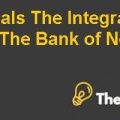The Hertz Corporation Case Study Solution
Problem Diagnosis
This case examines the leveraged buyout of The Hertz Corporation that took place in the year 2005. This deal was a high profile and a complex deal that had taken place and it was also a good example of the cutting edge practice within the world of private equity. This case adopts the prospective of Clayton, Dubilier and Rice (CD&R), that were the leaders of the private equity consortium for bidding to buy The Hertz Corporation in an auction from Ford.
The private equity firm is not standing at the last stage of the consortium and the immediate problem faced by the private equity firm is to determine how to raise its previous bid. The company needs to determine how high a bid should be offered to Ford so that value is created by the consortium. According to the private equity investors, the value would be generated based on the improvements in the global operations of The Hertz Corporation and determining a good capital structure for the company that is more efficient.
The task in this case is to analyze all the facts, considering the operational improvements, determining the new capital structure for The Hertz Corporation, creating the financial projections from 2006 to 2010 and the value the company. Finally, a comparison would be made between the current offer of $ 5.4 and $ 5.6 billion made by CD&R and then it would be compared with the valuation of The Hertz Corporation after including all the operational improvements and financial savings. Based on that a recommendation would be made.
Case Analysis
Before beginning with the actual analysis, we evaluate the struggle of CD&R in determining the factors for creating the value for Hertz Corporation.
Creating Value for Hertz
In pursuit of The Hertz Corporation, the private equity investors, CD&R had identified significant improvement opportunities for the company during the period from 2002 to 2005. They also considered the budget and Alamo but then determined that they were sub optimal. They stated that the capital structure of The Hertz Corporation was inefficient and thus they saw much higher opportunity for creating and increasing the value of the company. It had been identified by them that increasing the leverage of the company and the operational improvements have made The Hertz Corporation as a very attractive investment.
The Hertz Corporation Harvard Case Solution & Analysis
Currently, The Hertz Corporation was operating with a very little leverage and it was the dominant player within the US RAC market and the younger HERC fleet of the company was also worth more than the other players in the market. Hertz seemed to be an attractive investment opportunity to the private equity investors due to its strong brand, dominance and the historical performance of the company.
Earlier in 2005, the core business of Ford was in trouble and they wanted to monetize Hertz in order to improve their balance sheet. The advisors of Ford had recommended two options, one was to file for IPO in around June and the second option was to sell the business. As a result of the second option, Ford started to make operating and financial information that was highly confidential. The executives of Hertz started to conduct meetings with the potential buyers and as a result of a detailed due diligence, CD&R had identified a range of improvement opportunities for The Hertz Corporation.
The areas where CD&R considered to generate more value from included the US RAC on airport operating expenses, US RAC off airport strategy, European OpEx and SG&A, US RAC fleet costs, US RAC non fleet Capex and HERC ROIC. The auction was a better option for the private equity investors as compared to the IPO. They determined that they could create value through higher operating margins through lower costs because of operational improvements and lower WACC because of the extensive use of the asset backed securities.
Risks with the Investment
A number of risks also existed as a result of this proposed investment, CD&R also needs to considered before making a final decision of buying The Hertz Corporation. These investment risks are briefly listed below:
- The company was facing well established competition in all of its major markets around the world.
- The business of The Hertz Corporation was capital intensive and mature.
- The company faced high operational risk as it was exposed to the severe disruptions such as the 9/11 attackand cyclical changes within the travel activity.
- The new financial structure that had been proposed would be more complicated and complex.
- Many changes will have to be made in the operations of The Hertz Corporation in order to operate as an independent privately held firm.
- The managers of the company were afraid that the deals might end up with a possibility of breakup or many layoffs....................
This is just a sample partial case solution. Please place the order on the website to order your own originally done case solution.











